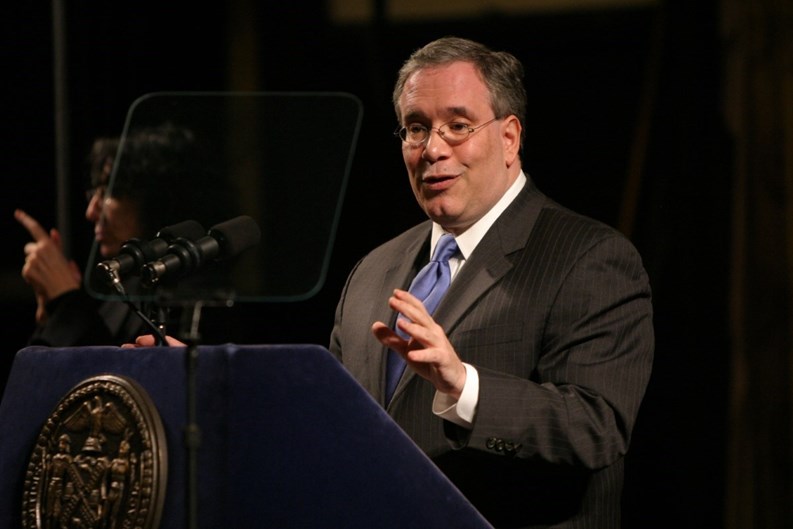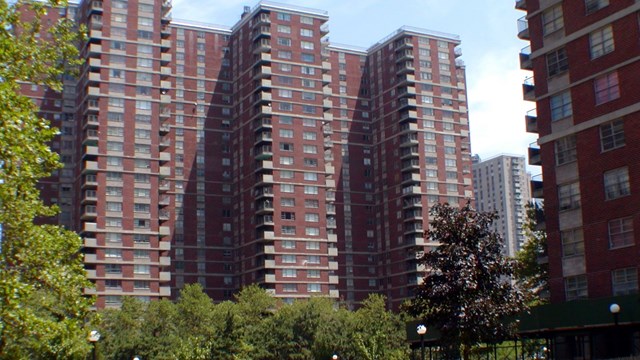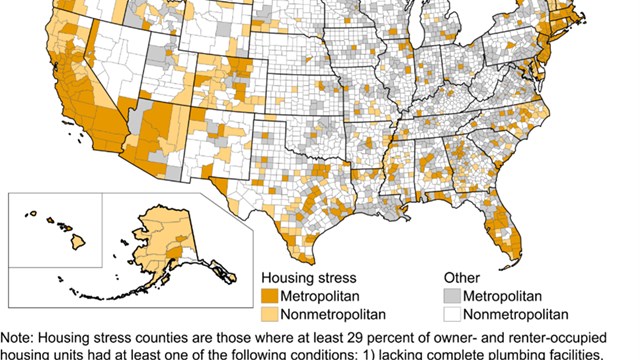Ask Scott Stringer to describe a typical day in his job as Manhattan Borough President and he’ll answer that there’s no such thing—and that’s the way he likes it.
“I haven’t found one yet,” he says. “Part of what we’ve tried to do since being elected was to really change this office and raise the bar as to what’s really possible.” Citing one example, he mentions putting together a land-use operation that will work on zoning and land use in Manhattan. “Day in and day out, we are coming up with new additions and policies that I really think are playing an important role in the borough.”
Stringer’s start in politics came at an early age and he’s got the bloodlines to prove it. He grew up in Washington Heights, and at the precocious age of 17 was appointed by civil rights activist Percy Sutton to a community board in the neighborhood. He later campaigned for his cousin, Bella Abzug, when she ran for the U.S. Congress, and his mother served on the New York City Council. He went to public schools in Manhattan and attended the John Jay College of Criminal Justice. He started working for Assemblyman Jerrold Nadler in 1983 and ran for Nadler’s seat in 1992 after Nadler was elected to Congress.
While a member of the Assembly, Stringer served as chairman of several committees such as the Cities Committee, Real Property Taxation Committee and the Oversight Analysis and Investigation Committee. He was elected to his first four-year term (the office has a limit of two terms) as Manhattan Borough President in September of 2005, succeeding C. Virginia Fields. He was sworn in on January 1, 2006.
“So in a sense of service, I have been involved since I was a teenager,” he says. “Now, 30 years later, it’s kind of exciting that you realize, you get to pick the community board appointments and run an office that I have really admired since I was a teenager. Most kids don’t think they want to grow up to be borough president, so it’s kind of funny.”
Housing Solutions
When asked if he has any political aspirations beyond borough president, Stringer responds that he’s focusing on the job he has now, not what he may want in the future. That leads to him mentioning some of the issues he’s tackled during his political career—including housing. He’s worked on many housing issues and legislation pertaining to condos and says it’s a particularly important issue today.
Stringer sees challenges in the areas of housing and home ownership because of skyrocketing costs of homes in Manhattan and the sub-prime mortgage crisis.
“I want generations of New Yorkers to be able to own a co-op or condo and make it affordable [so that they can] experience this wonderful quality of life in Manhattan,” he says. “I am concerned.”
Asked what can be about the housing situation, Mr. Stringer sees hope in the borough’s vacant lots.
“About a year and a half ago, my office did a vacant lot and abandoned building count in the borough and we identified over 2,000 properties that were abandoned, and we are now trying to figure out strategies [to create] affordable housing opportunities for people,” he says. “We are studying that really closely. I also introduced a packet of legislation in terms of changing the tax structure for vacant property above 110th Street… as a way of promoting growth and development.”
Regarding the various concerns of condo and co-op owners, Stringer says homeowners and groups often contact him with concerns relating to homeowner associations. Issues he hears about are increasing maintenance fees, relationships with boards, and legal issues such as what HOAs are responsible for in terms of building upkeep. “We have a service unit that helps rental and co-op and condo owners every day,” he says. “We try to answer questions—and everyone always has a question!”
Looking to the Future
As someone who grew up in Manhattan, Stringer appreciates the borough’s greatness and wants to make sure it keeps growing. He says he marvels at the billions of dollars that are invested here, and that even after the terror attacks of 9/11, millions of people from all over the world come to visit.
With that growth though, he wants to make sure Manhattan’s neighborhoods maintain their characteristics and identities.
“From Tudor City to East Harlem, [I’m] concerned about making sure we protect and preserve the flavor of our neighborhoods and the diversity of our population,” says Stringer. “I want to make sure we use the technology and tools we have now for healthy communities, for more open spaces, and for building quality of life.”
“In some neighborhoods, like in East Harlem, you have the highest rate of asthma among children and in some communities, like lower Manhattan, there’s not enough park space or open space. These are the challenges we have. That’s one of the reasons why I professionalized the office and created a land-use division, where we have urban planners in our office looking at every major development project and looking at open spaces and health.”
Another program that addresses communities involves graduate students working as interns with every community board district in the borough to help and assist with planning.
“While I recognize the skyline in Manhattan has to change, it has to change with community input,” he says. “That’s why I spent a lot of time training and empowering the local community board so they have a voice in what gets constructed in the borough.”
Taking the Initiative
Stringer says that one of his proudest achievements so far is his office’s Community Board reform. On the Manhattan Borough President website, Stringer claims that the potential of community boards has been achieved. In noting the progress boards have made, Stringer points to a 2005 study that uncovered several problems, including an overly politicized selection process, uneven distribution of funds, lobbying, conflict of interest laws being ignored and boards being operated without assessment and evaluation. Since taking office in 2006, Stringer says he has addressed these problems of the by reforming the recruitment and application process, and screening applicants via an independent panel. In addition, he has put an end to ad hoc removals; instituted a more thorough application process; begun soliciting feedback from members, chairs and district managers; enforcing conflict of interest laws; and allocating budgets that reflect boards’ constituencies.
Another area he’s proud of is his work with university expansions, such as Columbia’s.
“And while I supported the right to expand, I also made sure there were zoning protections in place for the people of West Harlem,” he says. “[I’m glad] I was able to negotiate an agreement with NYU where they now agreed to community planning principles for the village, which has never happened before. [In] every part of the borough, I am trying to play a positive role in responsible development but at the same time, trying to protect our neighborhoods and that has been the philosophy of our office since I was elected.”
Looking Forward
Of course, the job of borough president isn’t easy. As Stringer says, you can’t just wave a magic wand and get things done.
“You have to work with the office and use your bully pulpit wisely,” he says. “You have to know when to negotiate and when to draw the line in the sand, and we have done both. It’s constantly being very strategic in using the power of the office to represent the 1.6 million Manhattanites that you represent.”
He’s also proud of accomplishing much of what he talked about when he was campaigning in 2005.
“I’m really happy that when we look at the website that our campaign created back in 2005 and where we are now, after two years we accomplished so much of what we set out to do,” he says. “I pledged we would have a Manhattan Borough President Sports League during the campaign, and I wasn’t sure how we were going to do it. We now have a sports league that serves 1,000 children every year and I’m very proud of that.”
For the future, Stringer sees an opportunity to help make Manhattan the home of the “economic engines of the city, state and country.” And doing all that while keeping neighborhoods in the borough just that—neighborhoods.
“I really believe that we are smart urban planners—that’s what a borough president really is,” he says. “If we really listen to our communities, we will be able to create the economic development that is still essential and at the same time continue to have our flavor of Manhattan. That is my goal.
Anthony Stoeckert is a freelance writer and a frequent contributorto The Cooperator.







Leave a Comment